Books
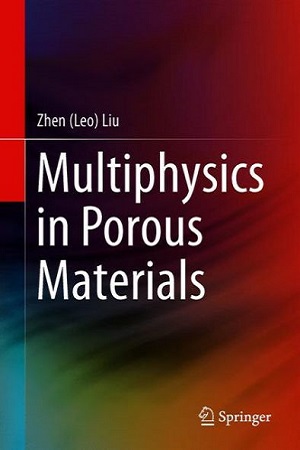
Author: Zhen (Leo) Liu
This book summarizes, defines, and contextualizes multiphysics with an emphasis on porous materials. It covers various essential aspects of multiphysics, from history, definition, and scope to mathematical theories, physical mechanisms, and numerical implementations. The emphasis on porous materials maximizes readers’ understanding as these substances are abundant in nature and a common breeding ground of multiphysical phenomena, especially complicated multiphysics. Dr. Liu’s lucid and easy-to-follow presentation serve as a blueprint on the use of multiphysics as a leading edge technique for computer modeling. The contents are organized to facilitate the transition from familiar, monolithic physics such as heat transfer and pore water movement to state-of-the-art applications involving multiphysics, including poroelasticity, thermohydro-mechanical processes, electrokinetics, electromagnetics, fluid dynamics, fluid structure interaction, and electromagnetomechanics. This volume serves as both a general reference and specific treatise for various scientific and engineering disciplines involving multiphysics simulation and porous materials.
BOOK PREVIEW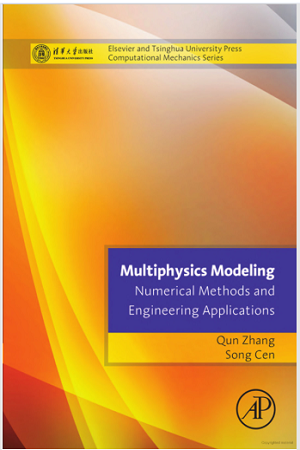
Authors: Qun Zhang and Song Cen
This book describes the basic principles and methods for multiphysics modeling, covering related areas of physics such as structure mechanics, fluid dynamics, heat transfer, electromagnetic field, and noise.
This book provides the latest information on basic numerical methods, also considering coupled problems spanning fluid-solid interaction, thermal-stress coupling, fluid-solid-thermal coupling, electromagnetic solid thermal fluid coupling, and structure-noise coupling.
Users will find a comprehensive book that covers background theory, algorithms, key technologies, and applications for each coupling method.
Key Features
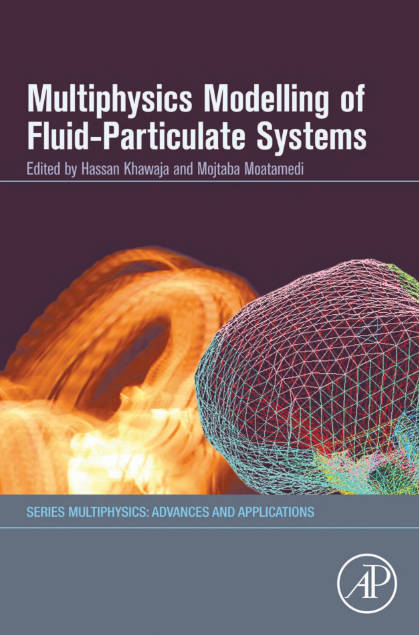
Authors: Hassan Khawaja
This book provides an explanation of how to model fluid-particulate systems using Eulerian and Lagrangian methods. The computational cost and relative merits of the different methods are compared, with recommendations on where and how to apply them provided. The science underlying the fluid-particulate phenomena involves computational fluid dynamics (for liquids and gases), computational particle dynamics (solids), and mass and heat transfer. In order to simulate these systems, it is essential to model the interactions between phases and the fluids and particles themselves. This book details instructions for several numerical methods of dealing with this complex problem. This book is essential reading for researchers from all backgrounds interested in multiphase flows or fluid-solid modeling, as well as engineers working on related problems in chemical engineering, food science, process engineering, geophysics or metallurgical processing.
BOOK PREVIEW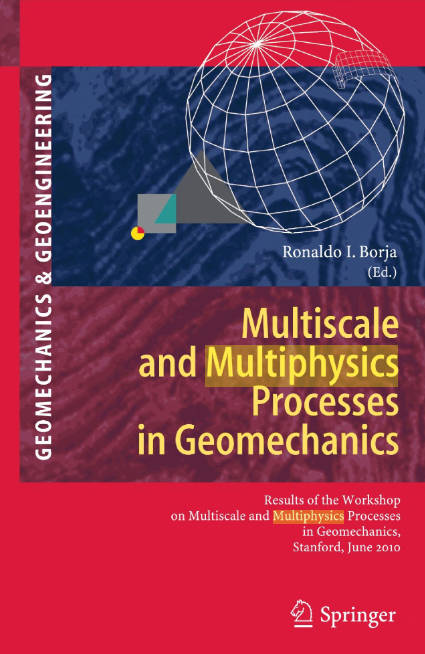
Editor: Ronaldo I. Borja
Following the successful International Workshop on Modern Trends in Geomechanics held in Vienna in 2005, Stanford University hosted its sequel in 2010 under the theme Multiscale and Multiphysics Processes in Geomechanics. This book is a compilation of the extended abstracts from the Stanford workshop and highlights the diverse and complex processes encountered in geomechanics in terms of scale (from nanometer to kilometer) and scientific scope. Topics covered in this book include coupled physics phenomena such as thermo-poro-mechanical and electro-poro-mechanical processes, chemical species reactivity and transport, strain localization phenomena, unsaturated soils, fluid flow in porous solids, and dynamics of fault zones. The book also covers contributions dealing with the development of multiscale numerical techniques, as well as the laboratory and field investigation methods supporting these numerical techniques.
BOOK PREVIEW
Author: Xinpu Shen,William Standifird
This book can be used as a reference textbook to petroleum, geotechnical and geothermal engineers, to senior undergraduate, graduate and postgraduate students, and to geologists, hydrogeologists, geophysicists and applied mathematicians working in this field. This book is also a synthetic compendium of both the fundamentals and some of the most advanced aspects of hydraulic fracturing technology.
BOOK PREVIEW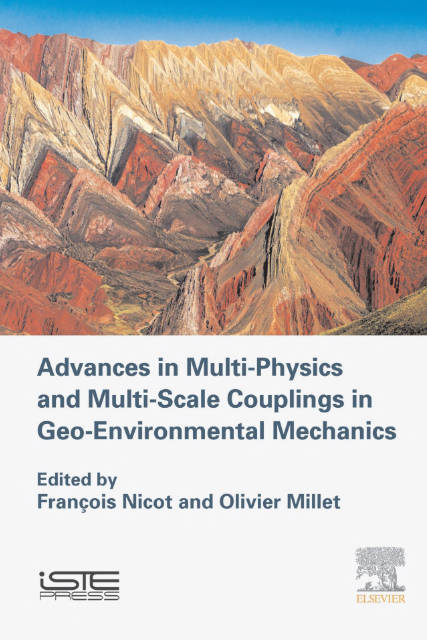
Editor: Francois Nicot, Olivier Millet
This book concludes by looking at some engineering problems involving larger scales, identifies contributions in the field of geomechanics, focuses on multi-scale linkages at small scales, and presents numerical simulations by discrete elements and tools of homogenization or change of scale.
BOOK PREVIEW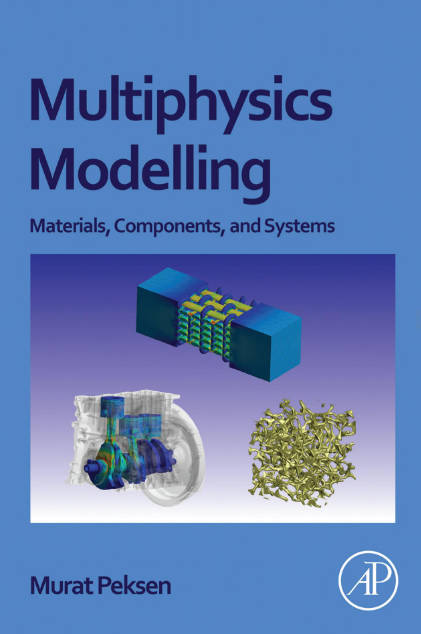
Author: Murat Peksen
This book focuses on situations where coupled phenomena involving a combination of thermal, fluid, and solid mechanics occur. Important fundamentals of the various physics that are required in multiphysics modelling are introduced and supported with practical problems. More advanced topics such as creep deformation, fatigue and fracture, multiphase flow or melting in porous media are tackled. 3D interactions in system architectures and energy systems such as batteries, reformer or fuel cells, and modelling of high-performance materials are exemplified. Important multiphysics modelling issues are highlighted. In addition to theory, solutions to problems, such as in linear and non-linear situations are addressed, as well as specific solutions for multiphysics modelling of fluid-solid, solid-solid and fluid-fluid interactions are given. Drawing on teaching experience, industry solutions, and the latest research, this book is the most complete guide to multiphysics modelling available for students and researchers in diverse science and engineering disciplines.
BOOK PREVIEW
Editor: Hassan Khawaja, Mojtaba Moatamedi, Thurai Rahulan
This book provides the fundamentals and latest developments on numerical methods for solving multiphysics problems, including fluid-solid interaction, fluid-structure-thermal coupling, electromagnetic-fluid-solid coupling, vibro and aeroacoustics. Chapters describe the different algorithms and numerical methods used for solving coupled problems using implicit or explicit coupling problems from industrial or academic applications. Given the book’s comprehensive coverage, automotive and aerospace engineers, designers, graduate students and researchers involved in the simulation of practical coupling problems will find the book useful in its approach.
BOOK PREVIEW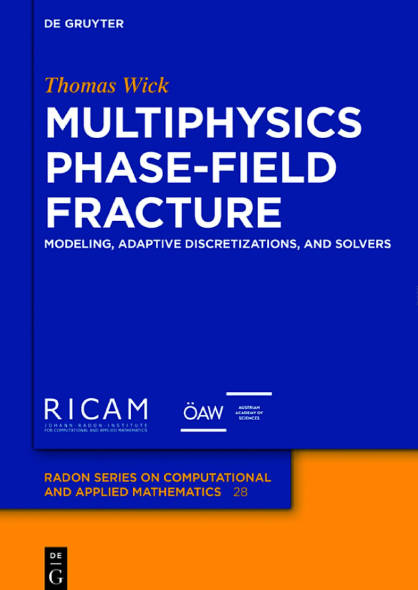
Author: Thomas Wick
This book is centered on mathematical modeling, innovative numerical algorithms and adaptive concepts to deal with fracture phenomena in multiphysics. State-of-the-art phase-field fracture models are complemented with prototype explanations and rigorous numerical analysis. These developments are embedded into a carefully designed balance between scientific computing aspects and numerical modeling of nonstationary coupled variational inequality systems. Therein, a focus is on nonlinear solvers, goal-oriented error estimation, predictor-corrector adaptivity, and interface conditions. Engineering applications show the potential for tackling practical problems within the fields of solid mechanics, porous media, and fluidstructure interaction.
BOOK PREVIEW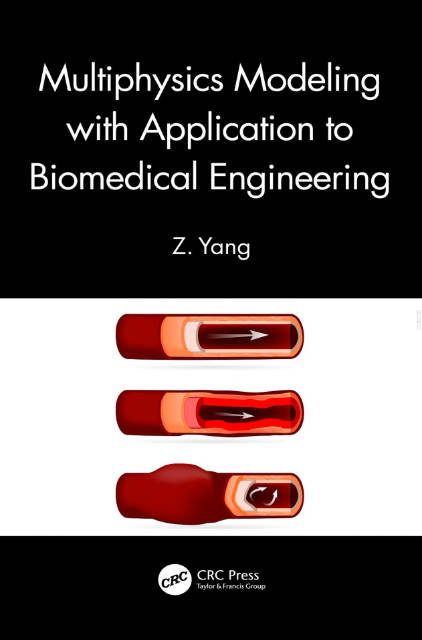
Author: Z. Yang
The aim of this book is to introduce the simulation of various physical fields and their applications for biomedical engineering, which will provide a base for researchers in the biomedical field to conduct further investigation. The entire book is classified into three levels. It starts with the first level, which presents the single physical fields including structural analysis, fluid simulation, thermal analysis, and acoustic modeling. Then, the second level consists of various couplings between two physical fields covering structural thermal coupling, porous media, fluid structural interaction (FSI), and acoustic FSI. The third level focuses on multi-coupling that coupling with more than two physical fields in the model. Each part in all levels is organized as the physical feature, finite element implementation, modeling procedure in ANSYS, and the specific applications for biomedical engineering like the FSI study of Abdominal Aortic Aneurysm (AAA), acoustic wave transmission in the ear, and heat generation of the breast tumor. The book should help for the researchers and graduate students conduct numerical simulation of various biomedical coupling problems. It should also provide all readers with a better understanding of various couplings.
BOOK PREVIEW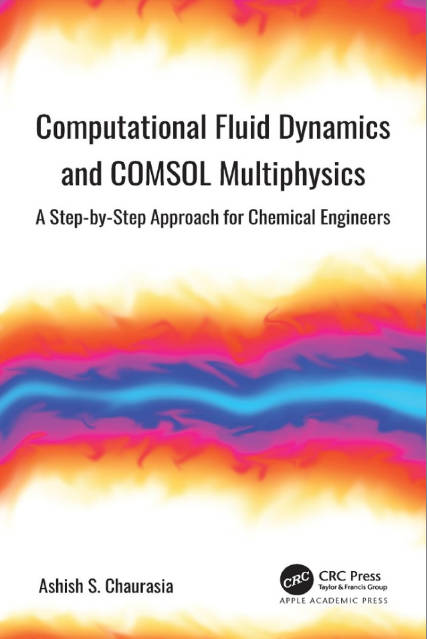
Author: Ashish S. Chaurasia
This textbook covers computational fluid dynamics simulation using COMSOL Multiphysics® Modeling Software in chemical engineering applications. In the volume, the COMSOL Multiphysics package is introduced and applied to solve typical problems in chemical reactors, transport processes, fluid flow, and heat and mass transfer. Inspired by the difficulties of introducing the use of COMSOL Multiphysics software during classroom time, the book incorporates the author’s experience of working with undergraduate, graduate, and postgraduate students to make the book user friendly and that, at the same time, addresses typical examples within the subjects covered in the chemical engineering curriculum. Real-world problems require the use of simulation and optimization tools, and this volume shows how COMSOL Multiphysics software can be used for that purpose.
BOOK PREVIEW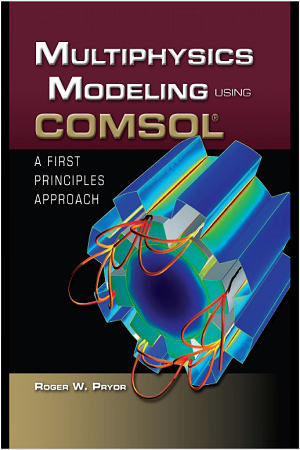
Author: Roger W. Pryor
Multiphysics Modeling Using COMSOL® rapidly introduces the senior level undergraduate, graduate or professional scientist or engineer to the art and science of computerized modeling for physical systems and devices. It offers a step-by-step modeling methodology through examples that are linked to the Fundamental Laws of Physics through a First Principles Analysis approach. The text explores a breadth of multiphysics models in coordinate systems that range from 1D to 3D and introduces the readers to the numerical analysis modeling techniques employed in the COMSOL® Multiphysics® software. After readers have built and run the examples, they will have a much firmer understanding of the concepts, skills, and benefits acquired from the use of computerized modeling techniques to solve their current technological problems and to explore new areas of application for their particular technological areas of interest.
BOOK PREVIEW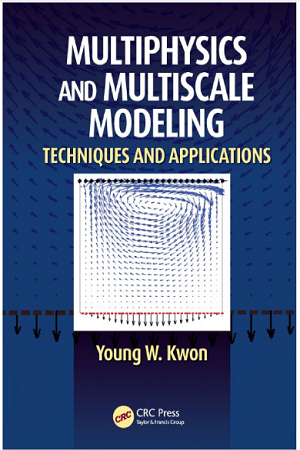
Author: Young W. Kwon
Written to appeal to a wide field of engineers and scientists who work on multiscale and multiphysics analysis, Multiphysics and Multiscale Modeling: Techniques and Applications is dedicated to the many computational techniques and methods used to develop man-made systems as well as understand living systems that exist in nature. Presenting a body of research on multiscale and multiphysics analysis collected by the author over the years, this book provides an assessment of multiple computational techniques that include the finite element method, lattice Boltzmann method, cellular automata, and the molecular dynamics technique. The author also presents a number of example problems relevant to multiphysics and multiscale analyses, and introduces the proper coupling techniques that can be used in conjunction with computational methods to solve a multitude of multiscale and multiphysics problems.
Multiphysics and Multiscale Modeling: Techniques and Applications emphasizes the use of multiphysics and multiscale techniques to aid in the understanding and development of complex physical behaviors and systems. This book serves as a resource in mechanical engineering, bioengineering, and materials engineering study, practice, and research.
In addition, this detailed book:
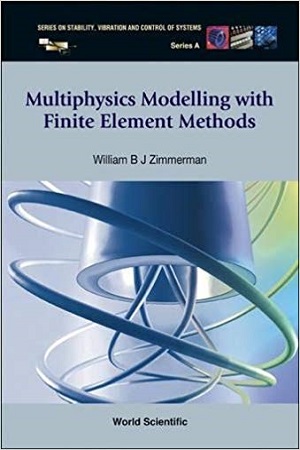
Author: William B J Zimmerman
Finite element methods for approximating partial differential equations that arise in science and engineering analysis find widespread application. Numerical analysis tools make the solutions of coupled physics, mechanics, chemistry, and even biology accessible to the novice modeler. Nevertheless, modelers must be aware of the limitations and difficulties in developing numerical models that faithfully represent the system they are modeling.This textbook introduces the intellectual framework for modeling with Comsol Multiphysics, a package which has unique features in representing multiply linked domains with complex geometry, highly coupled and nonlinear equation systems, and arbitrarily complicated boundary, auxiliary, and initial conditions. But with this modeling power comes great opportunities and great perils.Progressively, in the first part of the book the novice modeler develops an understanding of how to build up complicated models piecemeal and test them modularly. The second part of the book introduces advanced analysis techniques. The final part of the book deals with case studies in a broad range of application areas including nonlinear pattern formation, thin film dynamics and heterogeneous catalysis, composite and effective media for heat, mass, conductivity, and dispersion, population balances, tomography, multiphase flow, electrokinetic, microfluidic networks, plasma dynamics, and corrosion chemistry.As a revision of Process Modeling and Simulation with Finite Element Methods, this book uses the very latest features of Comsol Multiphysics. There are new case studies on multiphase flow with phase change, plasma dynamics, electromagnetohydrodynamics, microfluidic mixing, and corrosion. In addition, major improvements to the level set method for multiphase flow to ensure phase conservation is introduced.
BOOK PREVIEW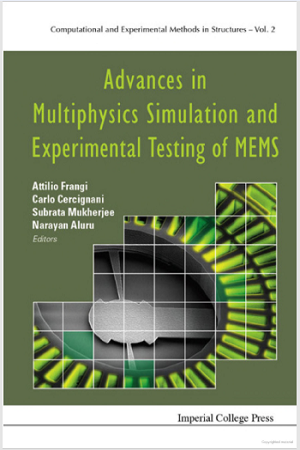
Editors: Attilio Frangi, Carlo Cercignani, Subrata Mukherjee and Narayan Aluru
This volume takes a much needed multiphysical approach to the numerical and experimental evaluation of the mechanical properties of MEMS and NEMS. The contributed chapters present many of the most recent developments in fields ranging from microfluids and damping to structural analysis, topology optimization and nanoscale simulations. The book responds to a growing need emerging in academia and industry to merge different areas of expertise towards a unified design and analysis of MEMS and NEMS.
BOOK PREVIEW
Authors: Ercan M. Dede, Jaewook Lee and Tsuyoshi Nomura
This book highlights a unique combination of numerical tools and strategies for handling the challenges of multiphysics simulation, with a specific focus on electromechanical systems as the target application. Features: introduces the concept of design via simulation, along with the role of multiphysics simulation in today’s engineering environment; discusses the importance of structural optimization techniques in the design and development of electromechanical systems; provides an overview of the physics commonly involved with electromechanical systems for applications such as electronics, magnetic components, RF components, actuators, and motors; reviews the governing equations for the simulation of related multiphysics problems; outlines relevant (topology and parametric size) optimization methods for electromechanical systems; describes in detail several multiphysics simulation and optimization example studies in both two and three dimensions, with sample numerical code.
BOOK PREVIEW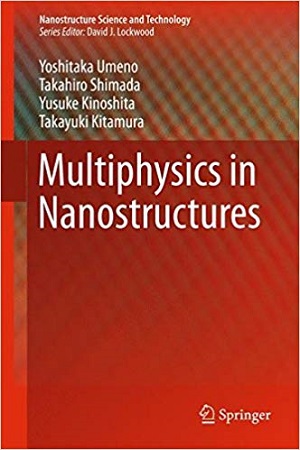
Authors: Yoshitaka Umeno, Takahiro Shimada, Yusuke Kinoshita, Takayuki Kitamura
This is the first book to systematically review and summarize the recent rapid advances and varied results of multiphysics in nanoscale materials including elastic strain engineering. This book comprises topics on remarkable properties of multiphysics in low-dimensional nanoscale components from first-principles density-functional theory (or tight binding) calculations, which are essential for the nonlinear multiphysics couplings due to quantum mechanical effects. This volume provides a clear point of view and insight into the varied work done in diverse fields and disciplines and promotes a fundamental to state-of-the-art understanding of properties of multiphysics. Because the novelty and complexity of mechanical and multiphysical properties of low-dimensional nanostructures originate from combinations of outer shapes (e.g., films, wires, tubes, and dots) and inner understructures (e.g., grain boundaries, domain walls, vacancies, and impurities), the nanostructures are classified into fundamental elements, and the properties of each element and their interplay are reviewed for systematic, in-depth understanding. This book points out a new direction for multiphysics in nanostructures, which opens the door both to exploiting and to designing novel functionalities at the nanoscale. Readers will be interested in this rapidly expanding multidisciplinary work and will be motivated to enter this promising research area.
BOOK PREVIEW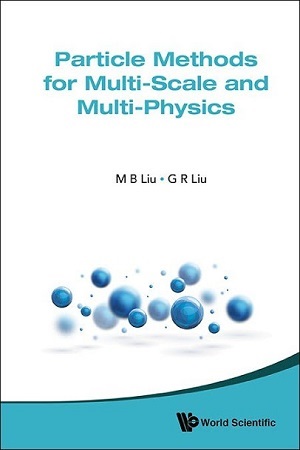
Authors: Liu Moubin, Liu Gui-rong
Multi-scale and multi-physics modeling is useful and important for all areas in engineering and sciences. Particle Methods for Multi-Scale and Multi-Physics systematically addresses some major particle methods for modeling multi-scale and multi-physical problems in engineering and sciences. It contains different particle methods from atomistic scales to continuum scales, with emphasis on molecular dynamics (MD), dissipative particle dynamics (DPD) and smoothed particle hydrodynamics (SPH).This book covers the theoretical background, numerical techniques and many interesting applications of the particle methods discussed in this text, especially in: micro-fluidics and bio-fluidics (e.g., micro drop dynamics, movement and suspension of macro-molecules, cell deformation and migration); environmental and geophysical flows (e.g., saturated and unsaturated flows in porous media and fractures); and free surface flows with possible interacting solid objects (e.g., wave impact, liquid sloshing, water entry and exit, oil spill and boom movement). The presented methodologies, techniques and example applications will benefit students, researchers and professionals in computational engineering and sciences.
BOOK PREVIEW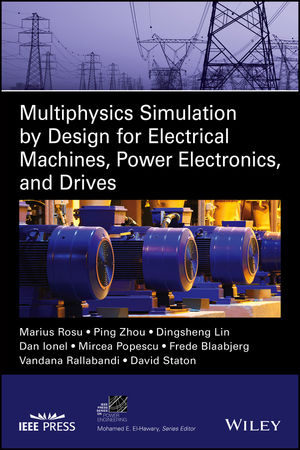
Authors: Marius Rosu, Ping Zhou, Dingsheng Lin, Dan M. Ionel, Mircea Popescu, Frede Blaabjerg, Vandana Rallabandi and David Staton
This book combines the knowledge of experts from both academia and the software industry to present theories of multiphysics simulation by design for electrical machines, power electronics, and drives. The comprehensive design approach described within supports new applications required by technologies sustaining high drive efficiency. The highlighted framework considers the electric machine at the heart of the entire electric drive. The book also emphasizes the simulation by design concept—a concept that frames the entire highlighted design methodology, which is described and illustrated by various advanced simulation technologies.
Multiphysics Simulation by Design for Electrical Machines, Power Electronics and Drives begins with the basics of electrical machine design and manufacturing tolerances. It also discusses fundamental aspects of the state of the art design process and includes examples from industrial practice. It explains FEM-based analysis techniques for electrical machine design—providing details on how it can be employed in ANSYS Maxwell software. In addition, the book covers advanced magnetic material modeling capabilities employed in numerical computation; thermal analysis; automated optimization for electric machines; and power electronics and drive systems. This valuable resource:
Multiphysics Simulation by Design for Electrical Machines, Power Electronics and Drives is an incredibly helpful book for design engineers, application and system engineers, and technical professionals. It will also benefit graduate engineering students with a strong interest in electric machines and drives. BOOK PREVIEW

Editors: Adnan Ibrahimbegović, Boštjan Brank
Presently, there is a strong need for better understanding of the limits of the multi-scale and multi-physics methodology in terms of its practical value for modeling the behavior of a given engineering structure, regarding the solution cost, result interpretation and model reliability. The issues concerning the formulation of a multi-physics problem, capturing the different scales in the solution and providing error estimates and bounds on the computed solution should all be examined. Another key issue in that sense concerns our ability to bring these advances in multi-scale and multi-physics nonlinear analysis to bear upon the solution of practically unlimited new capabilities of achieving the optimal design of structures under extreme conditions. In other words, the necessity for introducing a refined modeling approach is not only created by available computational tools, but more importantly to provide a better insight into any potential weakness of a structural system on hand and thus achieve a more economical design. The latter is becoming of paramount importance nowadays under ever increasing requirements of the market economies, where in a number of very competitive industrial sectors the need for economic design leads naturally towards the criteria based on ultimate limit state of a particular structural system on hand. This book allows exchange of the ideas on advanced computational models and techniques applicable to interdisciplinary, coupled and interaction problems, which are governing the complex behavior of engineering structures.
BOOK PREVIEW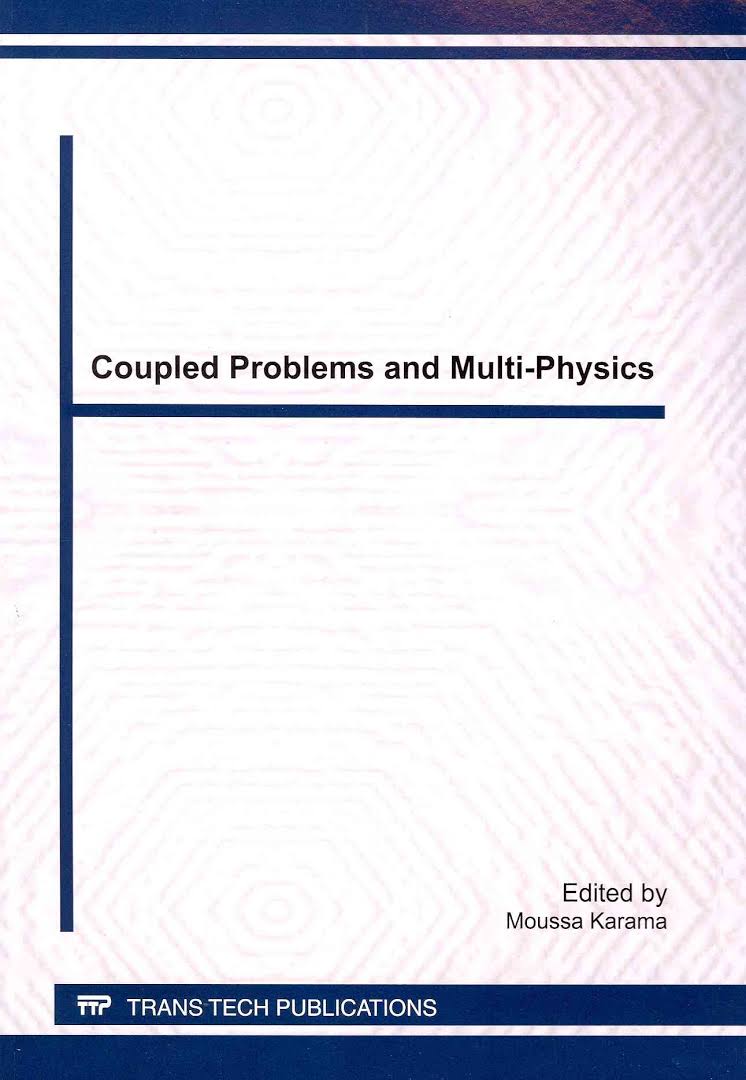
Author: Moussa Karama
The objective of Coupled Problems is to present and discuss the state-of-the-art mathematical models, numerical methods and computational techniques used for solving coupled problems of a multidisciplinary nature in science and engineering. The goal of the conference was to take a step forward, in the formulation and solution of real-life problems, with a multidisciplinary vision; accounting for all of the complex couplings involved in the physical description of the problem. Simulation of multifaceted physics problems is a common task in applied research and industry. Often a suitable solver is built by connecting together several single-aspect solvers into a network. In this special issue, research in various fields was selected for consideration: adaptive methodology for multi-physics solvers, multi-physics phenomena and coupled-field problems leading to computationally intensive structural analysis. The strategies which are used to keep these problems computationally affordable are of special interest, and make this an essential reference-work.
BOOK PREVIEW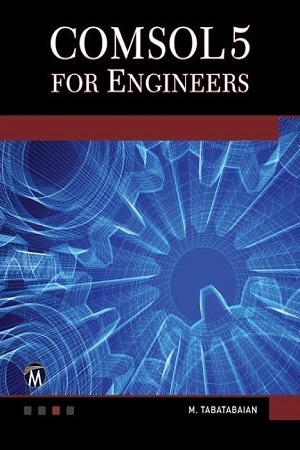
Author: Mehrzad Tabatabaian
COMSOL 5 Multiphysics® is one of the most valuable software modeling tools for engineers and scientists. This book, an updated edition of the previously published, COMSOL for Engineers, covers COMSOL5 which now includes a revolutionary tool, the Application Builder. This component enables users to build apps based on COMSOL models that can be run on almost any operating system (Windows, MAC, mobile/iOS, etc.). Designed for engineers from various disciplines, the book introduces multiphysics modeling techniques and examples accompanied by practical applications using COMSOL5.x. The main objective is to introduce readers to use COMSOL as an engineering tool for modeling, by solving examples that could become a guide for modeling similar or more complicated problems. The book provides a collection of examples and modeling guidelines through which readers can build their own models. The mathematical fundamentals, engineering principles, and design criteria are presented as integral parts of the examples. At the end of chapters are references that contain more in-depth physics, technical information, and data; these are referred to throughout the book and used in the examples. COMSOL5 for Engineers could be used to complement another text that provides background training in engineering computations and methods. Exercises are provided at the end of the text for use in adoption situations.
Key Features:
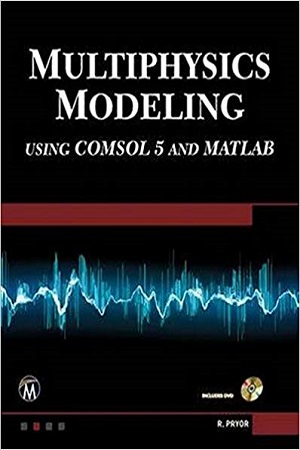
Author: Roger W. Pryor
COMSOL 5 and MATLAB are valuable software modeling tools for engineers and scientists. This book explores a wide range of models in coordinate systems from 0D to 3D and introduces the numerical analysis techniques employed in COMSOL 5 (including Application Builder) and MATLAB software. The text presents electromagnetic, electronic, optical, thermal physics, and biomedical models as examples. It presents the fundamental concepts in the models and the step-by-step instructions needed to build each model. The companion DVD includes all the built models for each step-by-step example presented in the text and the related animations, as specified. The book is designed to introduce modeling to an experienced engineer or can also be used for upper level undergraduate or graduate courses.
BOOK PREVIEW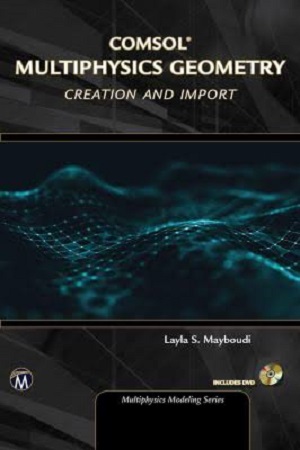
Author: Layla Mayboudi
Designed for engineers or COMSOL users who apply COMSOL Multiphysics to their engineering and physics models, the content can be utilized in any discipline that employs geometry creation, modification, and import of other CAD packages(e.g., AutoCAD, CATIA, Solid Edge, Revit, PTC Pro and more). Complex geometries often need to be simplified to make the numerical study feasible and also to save hours of computational time. In other cases, geometry needs to be modified to allow for accurate numerical analysis to be conducted. These issues occur in fields such as aerospace, biomedical, chemical, electrical, mechanical, and petroleum engineering. A companion disc with computer models from the book is included.
Key Features:
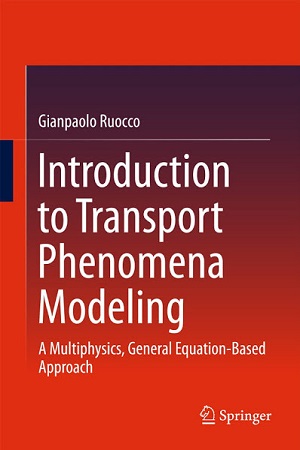
Author: Gianpaolo Ruocco
This textbook offers an introduction to multiple, interdependent transport phenomena as they occur in various fields of physics and technology like transport of momentum, heat, and matter. These phenomena are found in a number of combined processes in the fields of chemical, food, biomedical, and environmental sciences. The book puts a special emphasis on numerical modeling of both purely diffusive mechanisms and macroscopic transport such as fluid dynamics, heat and mass convection.To favor the applicability of the various concepts, they are presented with a simplicity of exposure, and synthesis has been preferred with respect to completeness. The book includes more than 130 graphs and figures, to facilitate the understanding of the various topics. It also presents many modeling examples throughout the text, to control that the learned material is properly understood.
BOOK PREVIEW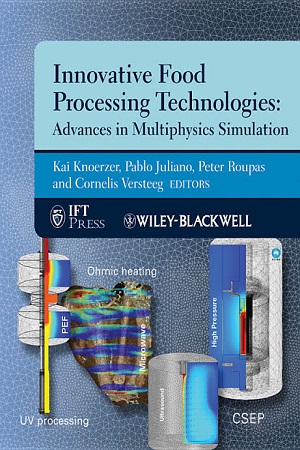
Authors: Kai Knoerzer, Pablo Juliano, Peter Roupas and Cornelis Versteeg
Part of the IFT (Institute of Food Technologists) series, this book discusses multiphysics modeling and its application in the development, optimization, and scale-up of emerging food processing technologies. The book covers recent research outcomes to demonstrate process efficiency and the impact on scalability, safety, and quality, and technologies including High Pressure Processing, High Pressure Thermal Sterilization, Radiofrequency, Ultrasound, Ultraviolet, and Pulsed Electric Fields Processing. Ideal for food and process engineers, food technologists, equipment designers, microbiologists, and research and development personnel, this book covers the importance and the methods for applying multiphysics modeling for the design, development, and application of these technologies.
BOOK PREVIEW












